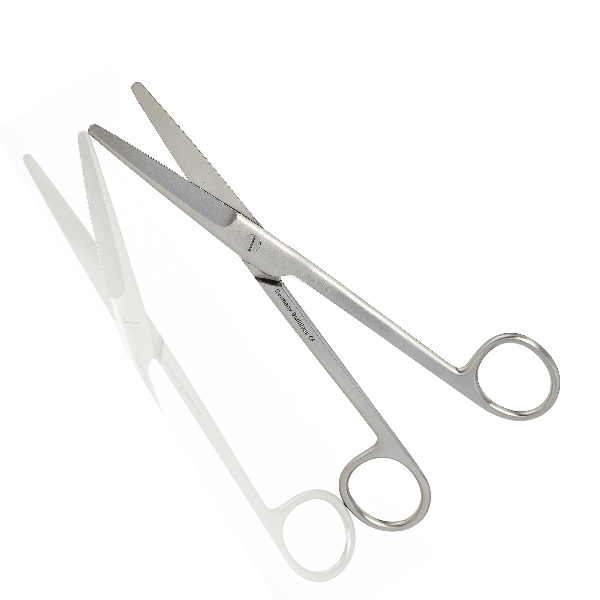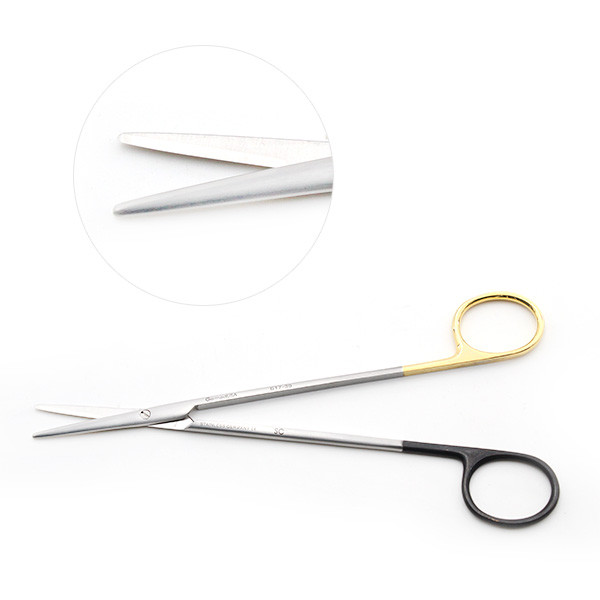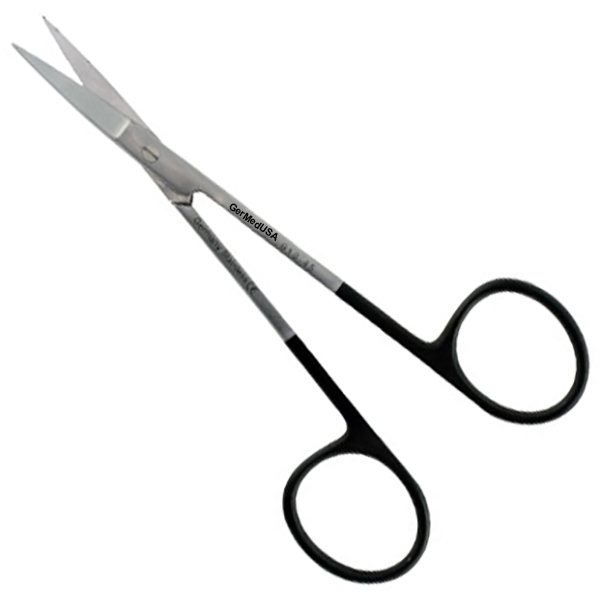Dental scissors are part of the necessary dentist tools in the clinic. These surgical scissors usually cut various types of material in the clinic. They have significant uses in Oral surgery and are frequently used in dental clinics as well. Cutting different types of tissue, cutting the suturing material, and cutting bandages, dressings and gauze are various ways in which Dental scissors can be used.
Types Of Scissors:
There are four different types of scissors listed below:
- Utility
- Suture
- Surgical
- Dissecting
Scissor Types According To Curvature:
- Straight
- Curved
- Angled
Types According To Use:
- Dressing Scissors
- Stitch removal scissors
- Tissue scissors
Types According To The Tip:
- Blunt
- Sharp
Utility dental scissors have very sharp blades and cut very tough material that other scissors cannot dissect. Blades are of high-quality material that makes them super sharp and resilient. These have straight handles and can dissect through the most rigid material like plastic and vacuum tubing.
Suture Scissors are for cutting sutures and suturing material. They are also known as Mayo Scissors and stitch scissors.
Furthermore, they are sharp- blunt scissors with short beaks and a small hook on one blade and their primary purpose is to remove sutures. Also, these are cheaper and can be replaced more frequently when blades can dull or blunt.
Surgical or operating scissors are for cutting and dissecting soft tissues. They are available in different sizes. Also, their blades can be sharp, blunt, curved, or pointed. Some examples include Iris Scissors, Operating Scissors, Tenotomy Scissors, Metzenbaum Scissors, and Mayo Scissors.
Finally, Dissecting Scissors separate and differentiate tissues. They aid in making incisions, and they can also remove tissue flaps. Also, dissecting scissors are better than scalpels since they provide more mechanical leverage.
Holds For Dental Scissors:
Scissors can be held in different ways by the operator. A wide-based tripod grip is the most common hold for any scissor. It is also the most efficient hold. The thumb and ring fingers go in the finger rings of the instrument.
The middle finger is also on top of the ring finger, and the index finger is placed on the scissor's fulcrum. Fingers are not put too far into the rings as it can compromise the maneuverability of the instrument.
Index finger and ring fingers are not put into finger rings of the dental instrument as it decreases efficiency and stability.
Some common scissors used in clinics are;
Mayo Scissors

Metzenbaum scissors

Iris scissors
What Is The Difference Between Iris And Tenotomy Scissors?
Tenotomy scissors are used for delicate surgeries. They can be straight or curved, sharp or blunt. They are mostly for use in oral and maxillofacial surgery, neurosurgery, and ophthalmic surgery. In comparison, iris scissors are excellent and sharp scissors.
They were previously developed for ophthalmic surgery but are now used in different other specialties as well. Iris scissors are very sharp with a fine tip. Some have curved blades for precision tasks, but others are straight. They are mainly for detailed fine tissue dissection and are for fine suture removal.
Which Type Of Scissors Is Used To Remove Dressings?
Bandage scissors are used to remove dressings. One example is Lister bandage scissors. These have an angled blade and a blunt tip on the bottom blade, which helps cut bandages without gouging the skin. The scissor's bottom blade is longer and can quickly go under the bandages to cut and remove them.
Blunt tip design of the scissor helps in easy removal and cutting of the bandage, preventing any accidental injury to the underlying tissues. They make bandage removal quick, easy, and efficient. They are to size bandages, cut through gauze, and cut through bandages already in place.
Care And Handling Of Surgical Scissors
Scissor handling has to be done correctly. Misuse and careless handling of scissors may lead to the blades of the instrument being blunt. Surgical instrument misuse can also endanger the patient.
The dentistry instruments should be handled individually to prevent any damage; they do not have to be jostled around. They are not supposed to be tossed around or dropped, and they have to be carefully placed in a tray.
Furthermore, all scissors must be sterilized before use. The scissors are not to be used for other items than they are meant for. The blood and remaining tissue should be wiped off the instrument before reuse. After the surgical procedure, the scissors should be kept sterile before autoclaving them to remove any infectious material.


